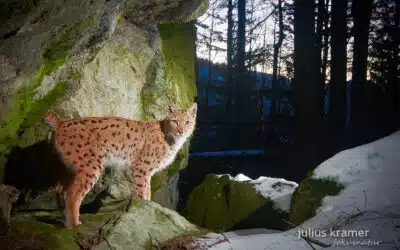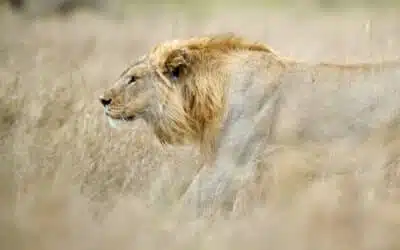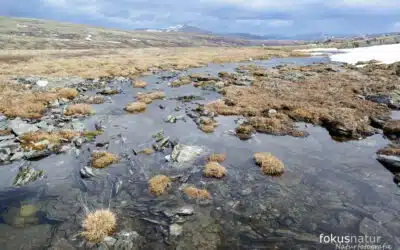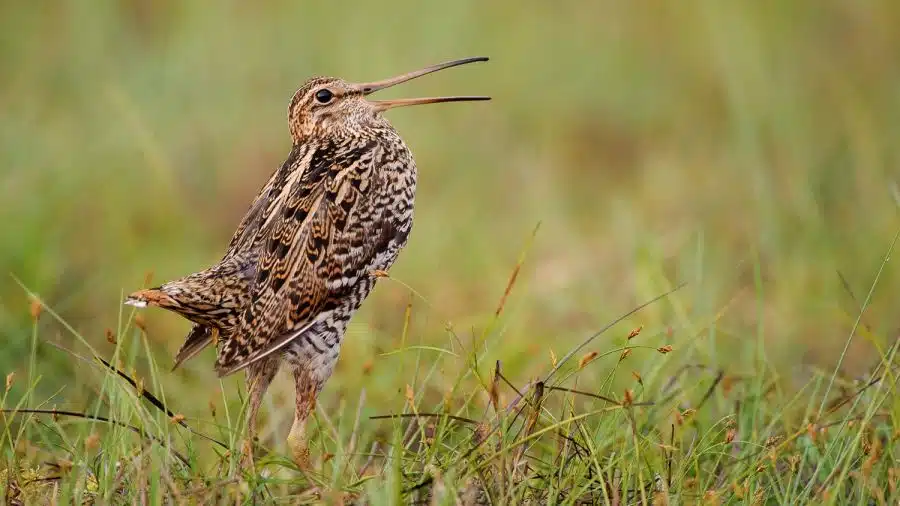A Bera safari offers one of the best opportunities to spot leopards in the wild, resting on rocky cliffs or moving lithely through the terrain. In fact, Bera is the only place in India where these majestic big cats are so easily spotted, making it particularly popular with wildlife photographers and nature lovers.
What makes our Bera Leopard Safari so extraordinary are the impressive 850 million year old granite formations, which are among the oldest rock structures in India. Despite the fact that livestock make up about 80% of the leopards’ diet, there are no conflicts between humans and big cats in this region. What is even more remarkable is that in the known history of over 100 years, not a single death due to leopard attacks has been documented.
Unlike other wildlife reserves in India, you can experience safari in Bera even during the monsoon season. In this article, I will show you the best photo spots around Bera Safari Lodge and give you valuable tips on how to take breathtaking pictures of these elegant big cats.
- What makes a leopard safari in Bera so special?
- The 5 best places to photograph leopards in Bera
- How to prepare for a photo safari in Bera
- Photographing with respect: ethics on safari
- Accommodation with access to top photo spots
- Conclusion
What makes a leopard safari in Bera so special?
The small region between Jodhpur and Udaipur is a true paradise for leopard photographers. The special magic of a Bera safari is not apparent at first glance – but anyone who has been here will quickly understand why this place is known as the “leopard capital”.
High probability of sighting
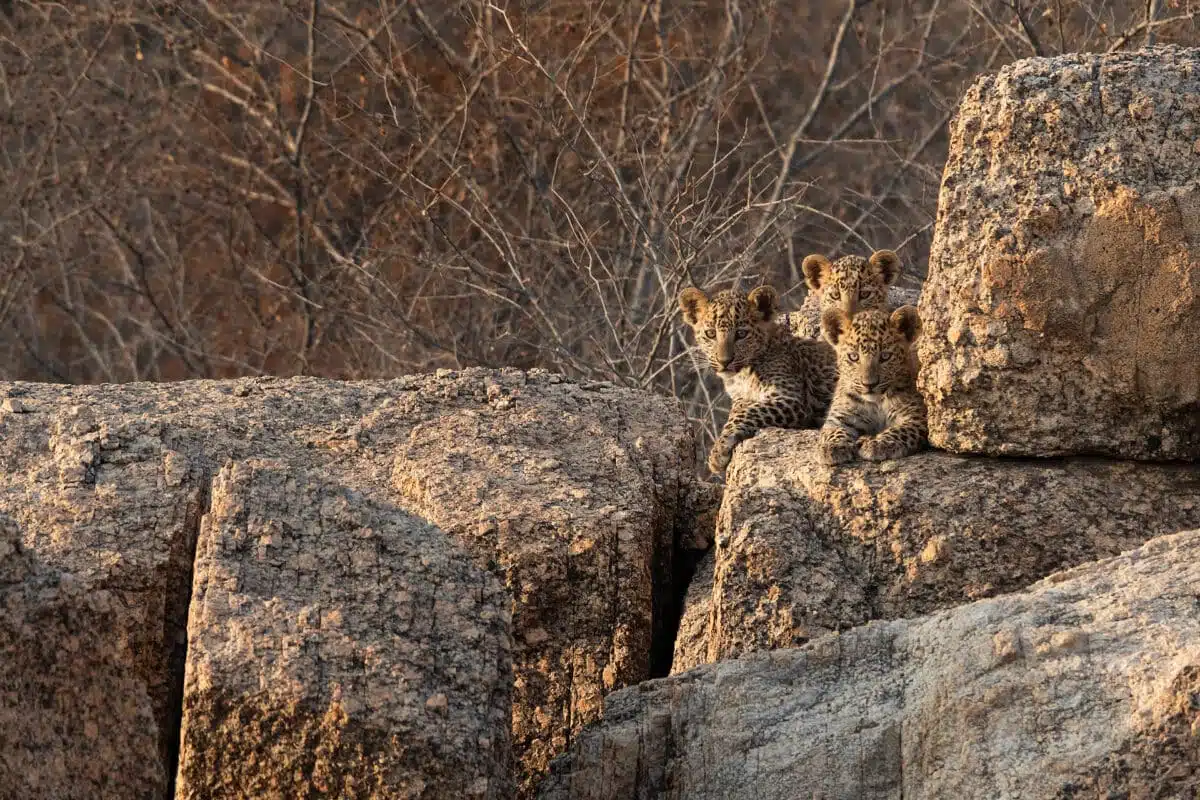
Unlike many tiger reserves, where sightings of big cats often remain unpredictable, Bera offers one of the best chances to spot leopards in the wild. The impressive density of 30 to 50 leopards in this relatively small area makes Bera one of the best places in Asia for leopard sightings.
The landscape is ideal for these shy big cats: Dry, thorny savannah woodland and open grassland are interspersed with hilly rock formations that offer numerous hiding places. These granite plateaus, caves and crevices allow the leopards to move around unnoticed if they wish – but also to sunbathe on the prominent rocks.
The adventures begin early in the morning when local trackers search for leopards. These experts rely on previous sightings and fresh paw prints to find out where the cats might be hiding. In fact, if you are patient enough, you have a pretty good chance of a sighting in Bera.
Come out with us!
Want to photograph leopards like never before? In Bera, one of the most fascinating places in India, I’ll take you right up close – to where the shy big cats roam freely between ancient granite rocks and small villages.
Together we will experience intense wildlife moments away from mass tourism – from a jeep, but also with DSLR camera traps. I will accompany you with all my photographic know-how and ensure that you not only take home impressive pictures, but also return with the feeling of having truly immersed yourself in the lives of these majestic animals.I support you with my photographic know-how so that you bring home unique pictures.
Photo tour India: Leopard safari in Bera-Jawai (Rajasthan)
Leopards between granite and gold – This extraordinary photo trip to India in February 2026 takes us deep into the heart of Rajasthan, where we have the rare opportunity to photograph leopards in the wild on exclusive safaris. In the rugged rocky landscape of Bera, we experience wilderness, culture and nature photography away from the crowds – intense, authentic and touching.
Human-animal coexistence as a photographic theme

What makes the leopard safari in Bera truly unique is the remarkable coexistence between the big cats and the local communities. The Rabari herders, easily recognizable by their white clothing and distinctive red turbans, have lived peacefully with the leopards for centuries.
Although livestock make up around 80% of the leopards’ diet, there is surprisingly no conflict between humans and predators. Even more remarkably, in the known history of over 100 years, not a single human fatality has been reported due to leopard attacks in this region. This extraordinary balance makes Bera a unique example of peaceful human-wildlife coexistence.
An old Indian proverb sums up this relationship: “Days belong to humans and nights to leopards”. Thanks to a compensation system for every piece of livestock lost to the leopards, the leopard population in Bera has stabilized and even grown. This harmonious relationship offers photographers unique motifs that impressively document the balance between man and nature.
Unspoiled nature without mass tourism
In contrast to India’s well-known national parks with their strict regulations and fixed safari times, Bera’s unique landscape, which has no official protected status, allows more flexibility. This results in several advantages for nature photographers:
Off-road driving is permitted, which allows for better photo perspectives
Safaris are possible outside the usual park hours
The authentic, untouched atmosphere is preserved
The jeep safaris in Bera are original, authentic and something very special by Indian standards. The adrenaline-filled off-road adventure through the Aravalli hills is an experience in itself. The experienced drivers navigate skillfully through the rough terrain, making the drive an exciting experience.
However, there is also a danger of over-commercialization here. According to Ranawat, the enormous attraction of this wild area to tourists has already led to pressure on the ecosystem. The rapid construction of hotels in the area could drive the big cats away in the long term. For now, however, Bera remains an insider tip off the beaten tourist track in Rajasthan, where watching the leopards climbing the rocks is as fantastic as the photos that are taken.
The 5 best places to photograph leopards in Bera
For passionate wildlife photographers, the region around Bera offers unique photo opportunities. The combination of rocky landscape and shy big cats creates breathtaking photo moments. Here I reveal the five best places where your chances of taking perfect leopard photos are particularly high.
1st Jawai Dam at sunrise

The picturesque Jawai Dam is not only a vital water reservoir for the region, but also a hotspot for wildlife photography. It is particularly magical here at sunrise, when the golden light falls across the landscape. Experienced guides arrange early morning tea and snacks as part of the safari while we wait for the perfect shot.
The early morning light provides ideal conditions for dramatic silhouettes of leopards against the rising ball of sunlight. In addition to leopards, crocodiles, numerous indigenous bird species and migratory birds can also be photographed here. The spectacular views from the back hills are simply incredible and an absolute must for landscape and wildlife photographers.
2. granite plateaus around Bera Village
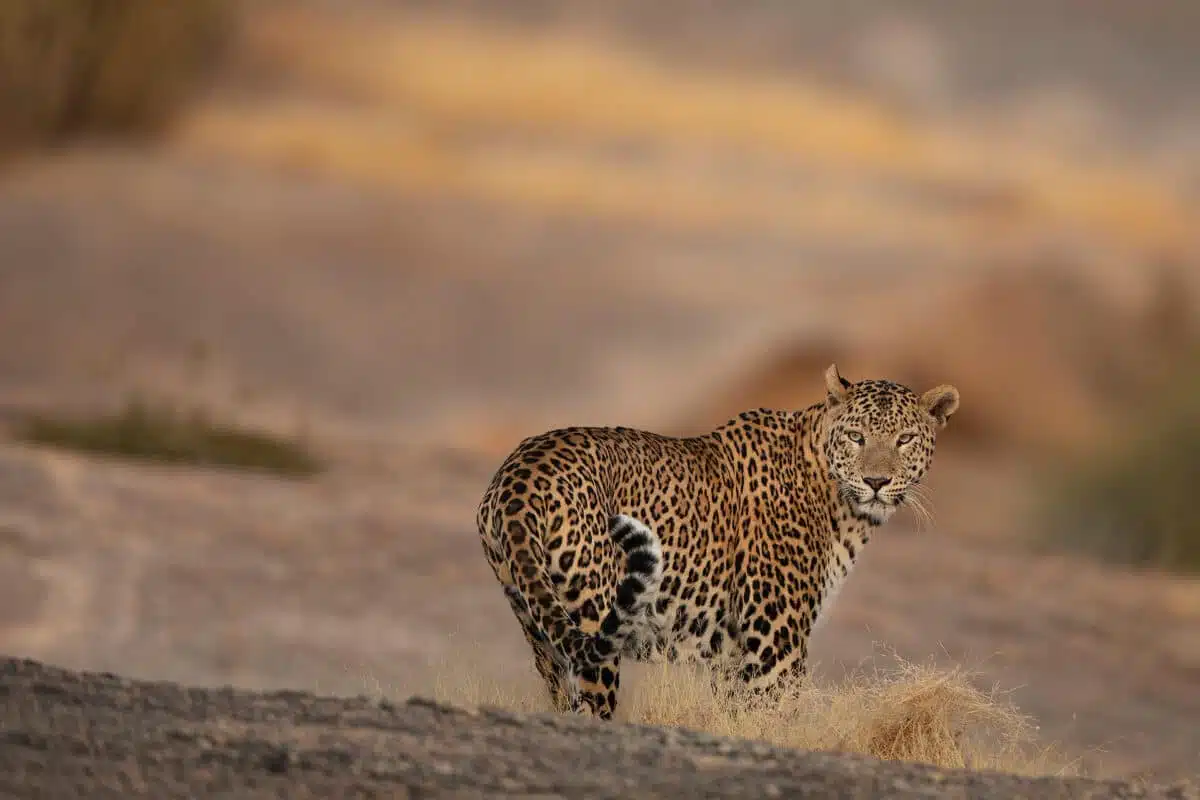
The striking granite plateaus surrounding the village of Bera offer some of the best opportunities to photograph leopards in their natural habitat. These ancient rock formations are not only aesthetically impressive, but also preferred resting places for leopards.
Especially in winter, the chances here are excellent, as the leopards stay longer on the sun-warmed rocks. With a telephoto lens of 500 or 600mm – ideally even 800mm with converters – you can take impressive pictures of the big cats as they roam majestically over the rocks.
3. rock formations near Bera Safari Lodge
Bera Safari Lodge is strategically located in the middle of the best leopard areas. The rock formations in the immediate vicinity of the lodge offer excellent photo opportunities – sometimes even directly from your own veranda! Run by a noble family, the lodge not only offers comfort, but also direct access to first-class photo spots.
The professional guides at the lodge are tireless in their search for leopards and take us to the best positions for exceptional shots. For the evening photo session, in addition to the telephoto lens, you should also have a shorter lens in the 200mm range ready, as the leopards sometimes come surprisingly close at dusk.
4. water points near Perwa
The waterholes near the village of Perwa are excellent places to photograph leopards coming to drink. These natural meeting places not only attract the shy big cats, but also other wild animals that serve as prey.
With patience and the right equipment, you can capture dramatic scenes here that document the everyday life of these elegant hunters. For best results, however, avoid weekends and festive periods as this place can be crowded.
5. the remote hills of Devgiri
The more remote hills of Devgiri offer a slightly lower probability of sightings, but the chance of particularly undisturbed and natural shots. These less frequented areas allow me to photograph leopards in a completely undisturbed environment.
The hilly landscape with its numerous caves and hiding places is ideal for patient photographers who are prepared to wait for the perfect moment. Here it is particularly worthwhile hiring a local tracker who knows the habits of the individual animals.
How to prepare for a photo safari in Bera
A successful photo safari begins long before the first shot is taken. With the right preparation, your chances of taking breathtaking leopard photos in Bera increase considerably. Here you can find out how to plan your Bera safari in the best possible way.
Best time to travel for photographers
The ideal time for a Bera leopard safari is between November and April during the dry season. The chances of leopard sightings are particularly high during this period. However, you should note that temperatures can vary greatly depending on the month.
During morning safaris in the winter months of December and January, it can get surprisingly cold – temperatures are often just above freezing. I therefore recommend that you pack a hat and gloves if you are traveling to Bera during this time.
In contrast, temperatures in April easily reach the 40°C mark. The months of May to July are less suitable for photo safaris, with daytime temperatures above 40°C and night-time temperatures barely below 30°C. Nevertheless, wildlife photographers in particular appreciate the hot months, as the animals spend more time at waterholes.
The region is generally poor in rainfall – even in the rainiest month of August there are still 21 dry days, while from October to January there is practically no rainfall.
What you need in your photo backpack
A well-packed photo backpack is essential for the Bera Safari. First of all, you should plan the following equipment:
Camera with telephoto lens (ideally 100-400mm or longer)
Sufficient memory cards and spare batteries (at least 4 batteries – power can sometimes be lost)
Notebook and external hard disk for backing up your recordings every day
Binoculars for observing animals
Dust-protected camera bag
Particularly important: always pack your photographic equipment in your hand luggage, not in the suitcase you are checking in. This will prevent loss and protect the sensitive equipment.
Another practical aid for the safari is a bean bag as a support for heavy lenses. You can take this with you empty and fill it with beans or rice on site. It fits perfectly over the open window of the jeep and makes it much easier to take photos with telephoto lenses.
If you like landscape photography, make sure you take a tripod with you – it will help you tremendously when we’re not in the car.
Clothing and behavior in the terrain
When choosing clothing for your Bera Safari Rajasthan, the onion look is a tried and tested strategy. It can get very cold in the morning and at dusk – so it’s important to have layers that you can put on or take off as required.
Light colors such as beige, sand or khaki are ideal for two reasons: they protect you from the heat and are less noticeable to wild animals. Avoid dark colors such as black or dark blue, as these can attract mosquitoes. Bright colors such as neon green or pink are also unsuitable because they could make wild animals nervous.
Long-sleeved clothing and long pants offer good protection against insects and thorns on walking safaris. Sturdy shoes are also important, especially if you are traveling outside the vehicle.
When dealing with wild animals, always respect their habitat. Avoid loud noises and hectic movements. Your guides know the local conditions best – follow their instructions so as not to disturb the animals or put yourself in danger.

Join me on my photo tours and immerse yourself in the world of wild landscapes and unique encounters. Together we will hone your photographic skills – practical, creative and full of inspiration. Secure your place now and rediscover the magic of light and nature.
Photographing with respect: ethics on safari
The relationship between humans and leopards is extremely tense in most regions of India. However, there is one notable exception in Bera that should shape our behavior during the safari. Ethical photography is not only important for the animals, but also preserves this unique harmony between man and wildlife.
No disturbance of the animals
In the Jawai region of Rajasthan, humans and leopards live in a surprisingly peaceful coexistence. Although leopards regularly prey on livestock and can be dangerous to humans, the locals believe that these majestic cats protect the temples nestled among the rocky cliffs. This spiritual connection has created a special tolerance.
As a photographer on a Bera Leopard Safari, I therefore have a special responsibility:
Never drive too close to the animals or disturb them in their natural behavior
Communicate quietly and avoid hectic movements
Do not make any noises to attract the attention of the leopards
Keep the prescribed distance, even if the perfect photo beckons
Despite the incredibly high concentration of leopards in the region, there has only been one incident in over a century, when a leopard abducted a little girl from the village of Vellar. Remarkably, instead of blaming the leopard, the family blamed themselves for leaving the child unattended and out in the open late at night. This extraordinary attitude shows a deep respect for the animals and their natural behavior.
Cooperation with local nature guides
The local nature guides are not only essential for tracking down the shy leopards, but also guarantee an ethically responsible safari. They know the individual animals, their habits and know exactly when to keep a respectful distance.
During my leopard safari in Bera, Rajasthan, I always make sure to follow the instructions of the guides. They have decades of experience and in-depth local knowledge. Whenever a guide signals that we should retreat, I follow this instruction without discussion – even if it means missing out on a potentially great photo.
Working with the locals also promotes the sustainable development of the region. By booking with Bera Safari Lodge, I am indirectly supporting the local economy and thus also the conservation of the leopards’ habitat.
Photographing with respect ultimately means putting the well-being of the animals above the perfect snapshot. In Bera, I realize that the best wildlife photos are taken when the animals can behave naturally and undisturbed – a principle that the local population has lived by for generations.
Accommodation with access to top photo spots
Choosing the right accommodation is crucial to the success of your photo safari in Bera. While some hotels only offer overnight accommodation, there is accommodation that provides direct access to the best leopard photo spots.
Bera Safari Lodge: Location and advantages
Run by an aristocratic family, Bera Safari Lodge is strategically located in the heart of the leopard area and offers an unbeatable base for photo safaris. With just seven luxurious bungalows, the lodge offers exclusive accommodation, all of which are air-conditioned and equipped with two bathrooms – a special luxury for nature travelers.
In fact, the location is so perfect that sometimes leopards can be seen right outside your own veranda! The spotlessly clean cottages offer a direct view of the magnificent rocky landscape where the shy big cats roam in the evenings.
The level of service at the lodge is particularly impressive:
Excellently trained staff
Safari jeeps in top condition
Tireless guides who do everything they can to track down leopards
Meals are eaten at a shared table with the host family, which makes for interesting conversations with other guests. The delicious home cooking is served by attentive staff dressed in traditional Rabari costume.
Tips for booking and planning
You should book early for your Bera Leopard Safari, especially during the high season from November to April. The region is becoming increasingly popular and the best accommodation is often booked out months in advance.
In addition to Bera Safari Lodge, there are other options such as Leopard’s Lair Jungle Lodge or Jawai Bera Leopard Camp, albeit with different levels of comfort and prices. Nevertheless, Bera Safari Lodge remains the favorite accommodation for mid-priced safaris in this area.
When planning your stay, you should allow for at least two to three nights in order to have enough time for several safaris. The lodge also offers special services for photographers and filmmakers, which can be booked on request.
So my tip: book your safari at least four months in advance to make sure you stay in the best accommodation with direct access to the top photo spots.
Conclusion
The Bera Safari undoubtedly offers a unique photography experience for wildlife photographers of all experience levels. My time among the majestic granite formations showed me why this place has become known as the “leopard capital”. The exceptionally high probability of sightings makes Bera truly a paradise for photographers looking to capture these elegant big cats in their natural habitat.
The harmonious coexistence between humans and leopards remains the most impressive feature of this region. Incredibly, not a single fatal attack on humans has been documented for over a century! Experiencing this harmony and capturing it photographically leaves a lasting impression – not only on the memory card, but also in the heart.
However, anyone planning a successful photo safari should consider a few aspects. Firstly, the right choice of year plays a decisive role in ensuring optimal light conditions and sightings. Secondly, the right equipment with telephoto lenses and spare batteries significantly increases the chances of successful shots. Thirdly, an ethically responsible approach not only guarantees the protection of the animals, but ultimately also more authentic photos.
My advice for budding Bera photographers: plan at least three to four safaris to capture the different light moods from the golden sunrise to the dramatic dusk. Although the region is becoming increasingly popular, it still retains its original charm away from mass tourism.
The combination of breathtaking scenery, fascinating leopards and the unique culture of the Rabari herdsmen makes every photo safari in Bera an unforgettable experience. This region impressively proves that humans and wildlife can coexist – a model that will hopefully endure for a long time to come.


